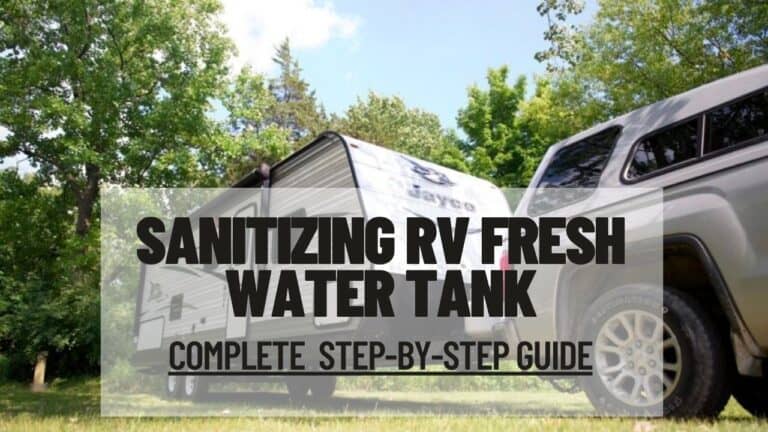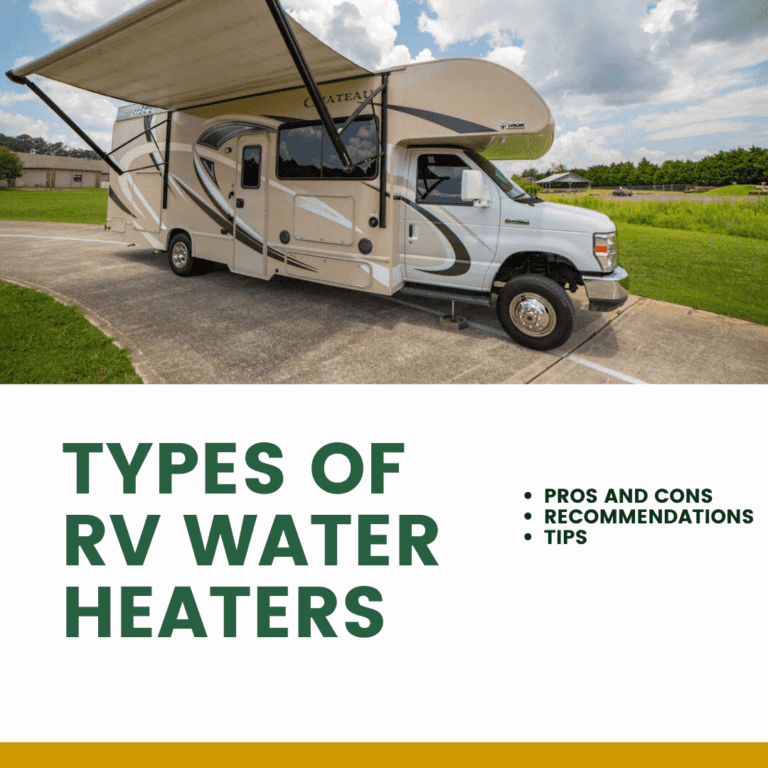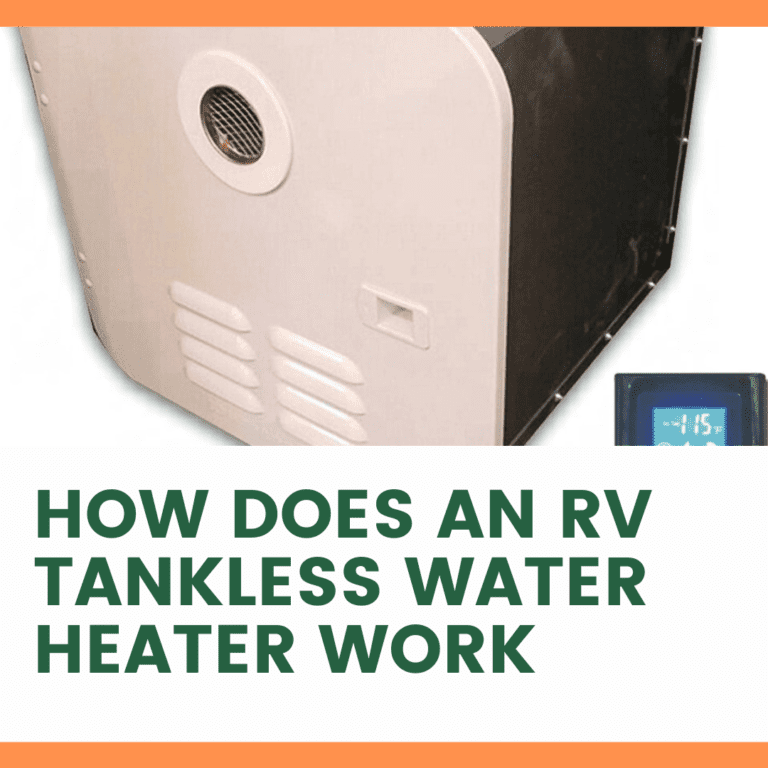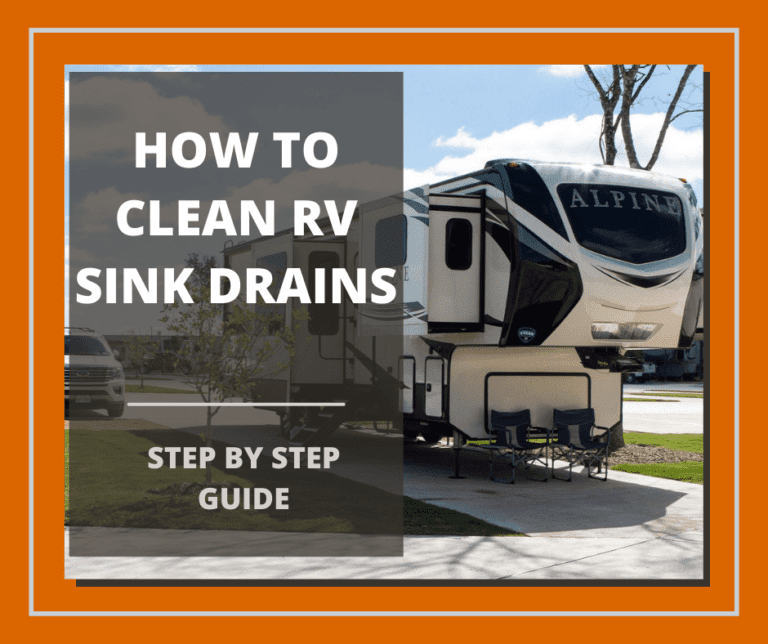How To Prime RV Water Pump – Step By Step Guide
If you’re an RV owner or a frequent camper, you know that water is life. Without water, your RV is just a big metal box on wheels.
That’s why it’s important to understand how to prime RV water pump and how it even works. If you’ve never been introduced to a water pump before, it can be a little intimidating, but we’re here to help you understand what it is and how it works.
So, buckle up, grab a cup of coffee, and let’s dive into the world of RV water pumps!

what does an RV water pump do
So, what does an RV water pump do, exactly? Simply put, it is the heart of your RV’s plumbing system. It’s responsible for pumping water from your fresh water tank through the pipes and out of your faucets, showerheads, and toilets.
Without a water pump, you’d have to manually pour water into your RV’s plumbing system, which would be a major hassle.
But how does the water pump work?
Most RV water pumps are powered by 12-volt DC electricity, either from your RV’s battery or from an external power source.
The pump has a diaphragm that oscillates back and forth, creating pressure and suction to move water through the system. When you turn on a faucet, the pump senses the drop in pressure and turns on to maintain a steady flow of water.
do i need to prime my rv water pump
what happens when your water pump starts acting up? You may notice that the water pressure is low, or that the pump is making strange noises. In some cases, your RV water pump might even need to be primed.
These are the most common reasons that you may find in your water pump so it needs to be primed.
1. Low Water Pressure
One of the most common signs that your water pump needs priming is the sudden drop in water pressure. If you notice that it’s taking longer than usual to fill up your sink, shower, or toilet, it might be a sign that there’s air trapped in the water pump.
This happens when the water lines are empty, or when the pump loses its prime. In this case, you’ll need to prime your RV water pump to get it back to its proper functioning.
2. Strange Noises
Another sign that your water pump might be in trouble is when you hear strange noises coming from it. A whining, groaning or vibrating noise could be a sign that the pump is struggling to pull in enough water.
In this case, priming your water pump might help the pump to draw in water more efficiently, and reduce the strain on the motor.
3. Water Leaks
If you notice water leaks around your RV water pump, it might indicate that the pump is not functioning properly, and could potentially cause further damage to your camping vehicle.
A damaged seal or gasket could cause water to leak out, and the pump to lose its prime. This could be caused by a variety of factors, including age, wear and tear, and improper installation.
4. Clogged Water Filter
Clogged water filters are a common culprit in water pump problems, particularly if you’ve been using untreated water from a natural source, such as a lake or stream.
When the filter becomes clogged, it reduces the flow of water, and can cause the pump to lose its prime. In this case, you’ll need to clean or replace the water filter, and then prime your RV water pump to get it up and running again.
5. Power Outages
Power outages can also cause your RV water pump to lose its prime. If you notice that your water pump is not functioning properly after experiencing a power outage, it’s likely that air has gotten into the line or that the pump has lost its prime. Priming your water pump can often be a simple solution for this issue.
What to do before priming rv water pump
Step 1: Check your water tank level
This may seem like a no-brainer, but you’d be surprised to know how often RV owners forget to check their water tank before priming the pump.
If your water tank is empty or too low, you won’t be able to prime the pump, even if everything else is in perfect condition. Plus, running the pump without any water can damage its parts and cause it to fail sooner.
So, before you start the priming process, make sure that your water tank is at least half full. If you need to fill it up, use a potable water source and a designated hose.
Step 2: Turn off your water heater
Another common mistake that RV owners make when priming their water pumps is forgetting to turn off their water heater.
If you leave the water heater running, air will get trapped in its lines, making it harder to prime the pump and potentially damaging the water heater’s thermostat. So, before you start priming, turn off your water heater, let it cool down for a few minutes, and wait until you’ve finished pumping water before turning it back on.
Step 3: Remove the winterizing valve
If you’ve winterized your RV, you may have installed a bypass valve to prevent antifreeze from entering your water system.
That valve needs to be removed before you can prime the pump. Look for the valve near the water pump or the water inlet, and turn it to the open position.
Some RVs may have more than one valve, depending on the layout of the water system. Consult your owner’s manual or contact your RV dealer if you’re not sure how to locate the winterizing valve.
Step 4: Inspect your water filter and faucet screens
Before you start pumping water, take a few moments to inspect your water filter and faucet screens. These components can get clogged with debris and sediment, reducing the water flow and causing low pressure. Clean or replace them if needed, and make sure they’re tightly secured. You don’t want any loose parts or leaks that could compromise your water system.
Step 5: Follow the manufacturer’s instructions
Once you’ve completed the above steps, you’re ready to prime your RV water pump. However, every pump model may have slightly different requirements or steps for priming.
Consult your pump’s owner’s manual or contact the manufacturer for specific instructions. For most pumps, you’ll need to turn on the pump switch, open a faucet or two to release air pockets, and wait for water to flow steadily. Some pumps may require additional steps, like filling the pump or bleeding the lines.
Take your time, be patient, and follow the instructions carefully. Don’t rush the process, and don’t panic if it takes a bit longer than expected. A successful priming will ensure that you have a reliable source of water for your next adventure.
where is my rv water pump located

First things first, let’s talk about Class A RVs. These large beasts of the road are typically equipped with a water pump located beneath the kitchen sink or in a nearby cabinet. To access the pump, remove the cabinet door or any other obstruction that’s blocking it.
If you’re still having trouble locating it, check underneath the RV near the water tank. You might even be able to hear the pump running if you listen closely!
Next up, let’s discuss Class C RVs. These smaller vehicles are often built on a truck or van chassis and have a water pump conveniently located under the dinette or in a nearby storage compartment.
To access the pump, simply remove the screws that hold the cover in place and voila!
If you’re the proud owner of a travel trailer, you’re in luck! Most travel trailer water pumps are located in a convenient and accessible location, such as under the bathroom sink or in a nearby storage compartment. To access the pump, simply remove any obstruction and you’re golden.
Finally, let’s talk about the fifth wheel. If you have a fifth wheel, your water pump is most likely located in a similar location to that of a travel trailer: under a sink or in a storage compartment. However, some fifth wheels have their water pump located in the basement or near the water tank. If you’re unsure where to look, check with your RV manufacturer or dealer.
HOW TO PRIME RV WATER PUMP
Step 1:Turning off the pump
First things first, locate your RV’s water pump as I stated above and ensure it’s turned off. You don’t want water bursting out unexpectedly while you’re working on it. Safety first, folks!
Step 2: Filling the Freshwater tank to the full
It’s important to have plenty of water in your RV’s freshwater tank before attempting to prime the pump. Make sure the tank is completely filled to avoid any complications during the priming process.
STEP 3: Finding the prime switch
Next, Many RV water pumps have a prime switch that can make priming easier, you should locate the prime switch on your RV’s control panel.
Depending on your RV make and model, this switch may be labeled differently, but it’s typically labeled “water pump” or “prime.” Once you’ve located the switch, turn it on. Don’t worry if you don’t hear anything yet – that’s perfectly normal.
STEP 4: Priming the pump
Now it’s time to prime the pump. Open all of the faucets and water outlets in your RV to allow air to escape as you prime. Then, find the water pump and remove its housing cover. Look inside the housing and locate the round plate with a small rubber cap in the center. Remove the cap with a flathead screwdriver and pour water into the exposed hole until it overflows.
STEP 5: Testing the pump
With the water pump primed, it’s time to test it out. Close all faucets and outlets, and turn on the water pump switch. You should start hearing the water pump working, and water should begin flowing through your faucets. Congratulations, you’ve successfully primed your RV pump!
Maintaining your water pump after priming
By performing regular maintenance on your water pump, you can avoid costly repairs or needing to replace the entire system. So, what maintenance steps should you be taking?
1. Check for leaks: Water leaks can cause your water pump to overwork and even run dry. Regularly inspect your water system for leaks and promptly address any issues. Check all hoses, connections, and the water pump itself for any signs of leakage.
2. Clean or replace the filter: Your water pump’s filter keeps debris and sediment from entering your water system, which can cause damage to your pump or clog your pipes. Clean or replace the filter before it becomes clogged with debris.
3. Lubricate moving parts: Your water pump has several moving parts that require lubrication to function correctly. Apply a few drops of lubricant to the bearings, impeller, and motor shaft as directed in your pump’s manual.
4. Regularly drain your water system: Draining your water system removes any water or debris that may have collected and stagnant water that can cause corrosion or clog your pipes. Regularly draining your water system is essential to prolonging the life of your water pump.
Conclusion
Maintaining your water pump is vital to ensuring that your RV’s water system operates correctly. By performing these tasks regularly, you can avoid costly repairs, prevent your water pump from running dry, and extend the lifespan of your system. Don’t let your water pump run dry on your next camping trip. Take care of your water system, and it will take care of you.





